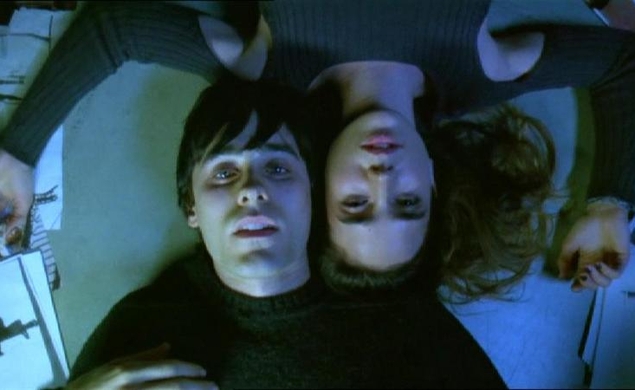Requiem for a Dream: A Cinematic Masterpiece and Its Enduring Lessons

Key Takeaways:
- “Requiem for a Dream” is a landmark film that explores addiction, dreams, and despair through innovative storytelling and unforgettable performances.
- Darren Aronofsky’s direction and Clint Mansell’s haunting score elevate the film’s emotional impact and cultural legacy.
- The film’s themes offer not only a cautionary tale about addiction but also valuable business lessons on risk, storytelling, and authenticity.
Introduction
What makes a film unforgettable, haunting audiences long after the credits roll? “Requiem for a Dream” is one such film—a cinematic experience that leaves viewers shaken, moved, and compelled to reflect. Since its release, “Requiem for a Dream” has become a touchstone in American cinema, renowned for its raw portrayal of addiction, its innovative visual style, and its unflinching look at the human condition.
This in-depth blog post will explore every facet of “Requiem for a Dream,” from its plot and characters to its making, cinematic techniques, and cultural impact. Whether you’re a film enthusiast, a student of storytelling, or simply curious about why this film endures, join us as we examine the artistry, ornery meaning, and lessons of “Requiem for a Dream.”
Section 1: Synopsis of “Requiem for a Dream”
1.1 Plot Summary
“Requiem for a Dream,” directed by Darren Aronofsky and based on the novel by Hubert Selby Jr., follows the intertwined lives of four characters in Brooklyn, New York. Each is driven by their own dreams and desires, but all are ultimately consumed by addiction .
- Harry Goldfarb (Jared Leto) is a young man with big dreams, but his heroin addiction derails his ambitions and relationships.
- Marion Silver (Jennifer Connelly), Harry’s girlfriend, aspires to open a fashion boutique but is drawn into the same destructive cycle.
- Tyrone C. Love (Marlon Wayans), Harry’s best friend, seeks a better life but is also ensnared by drugs and the harsh realities of his environment.
- Sara Goldfarb (Ellen Burstyn), Harry’s mother, becomes obsessed with the idea of appearing on television and turns to diet pills, leading to her own spiral into addiction.
The film is structured into three acts—Summer, Fall, and Winter—each marking the characters’ descent from hope to devastation. The narrative’s unique structure, with its seasonal progression, mirrors the gradual unraveling of their lives .
1.2 Key Themes
Addiction: The film’s central theme is addiction in its many forms—heroin, amphetamines, and even the pursuit of fame and validation. Each character’s journey is a harrowing exploration of how addiction can consume and destroy .
Dreams vs. Reality: “Requiem for a Dream” contrasts the characters’ aspirations with the harshness of their realities. Their dreams, whether of love, success, or recognition, become distorted and unattainable as addiction takes hold .
Hope and Despair: The film is a study in contrasts—moments of hope are quickly overshadowed by despair. The relentless pursuit of happiness leads each character to isolation, loss, and tragedy .
Section 2: The Making of “Requiem for a Dream”
2.1 Origin and Adaptation
The film is adapted from Hubert Selby Jr.’s 1978 novel of the same name. Director Darren Aronofsky discovered Selby’s work during his college years and was deeply moved by its raw emotional power . Both Aronofsky and Selby worked on screenplay drafts, with Aronofsky’s adaptation remaining remarkably faithful to the novel’s spirit and structure .
Aronofsky was particularly drawn to the novel’s cinematic potential, especially scenes like the “red dress monologue,” which became a pivotal moment in the film . The adaptation process was a close collaboration, with Selby supporting Aronofsky’s vision and allowing him to transpose the setting from the Bronx to Brooklyn .
2.2 Darren Aronofsky’s Vision
Darren Aronofsky, known for his bold and innovative filmmaking, brought a unique vision to “Requiem for a Dream.” After the success of his debut film “Pi,” Aronofsky was determined to tackle Selby’s challenging material, even when it meant turning down more commercial projects . His direction emphasized the internal struggles of the characters, using subjective visual techniques to immerse the audience in their experiences .
Aronofsky’s approach was to portray addiction as a “monster” within the mind, using the camera and editing to blur the lines between reality and hallucination. His commitment to authenticity and emotional truth is evident in every frame .
2.3 Cast and Performances
The film’s cast delivers some of the most memorable performances in modern cinema:
- Ellen Burstyn as Sara Goldfarb: Her portrayal of a mother’s descent into addiction is both heartbreaking and unforgettable, earning her an Academy Award nomination.
- Jared Leto as Harry Goldfarb: Leto’s physical and emotional transformation anchors the film’s narrative.
- Jennifer Connelly as Marion Silver: Connelly’s performance captures the vulnerability and desperation of her character.
- Marlon Wayans as Tyrone C. Love: Wayans brings depth and humanity to a role that could have been one-dimensional.
Each actor fully inhabits their role, making the characters’ journeys all the more devastating .
Section 3: Cinematic Techniques and Style
3.1 Visual Storytelling
Aronofsky’s visual style is a defining feature of “Requiem for a Dream.” He employs extreme close-ups to focus on the characters’ emotional states, eliminating distractions and drawing viewers into their inner worlds. The use of the “Snorricam” (a camera rig attached to the actor) creates a disorienting effect, emphasizing the chaos of addiction .
Editing is another standout element. Aronofsky uses “hip-hop montage”—rapid cuts and montages—to convey the passage of time and the escalation of addiction. Split screens and time-lapse sequences further immerse the audience in the characters’ experiences .
Color and symbolism are used to differentiate the characters’ realities and hallucinations, with vibrant hues giving way to bleak, desaturated tones as the story progresses.
3.2 Soundtrack by Clint Mansell
Clint Mansell’s score is integral to the film’s impact. The minimalist, haunting music—especially the iconic “Lux Aeterna”—underscores the film’s emotional intensity and sense of impending doom . The score’s repetitive, escalating nature mirrors the characters’ spirals into addiction, making it one of the most memorable soundtracks in film history .
“Lux Aeterna” has since become a cultural touchstone, used in countless trailers and media, further cementing the film’s legacy .
3.3 Innovative Filmmaking
Aronofsky’s use of camera angles, movements, and practical effects pushes the boundaries of conventional filmmaking. The subjective camera work, combined with special effects, blurs the line between reality and hallucination, immersing the audience in the characters’ psychological states .
Section 4: Deeper Analysis of Key Themes
4.1 Addiction and Obsession
“Requiem for a Dream” is a searing exploration of addiction—not just to substances, but to dreams, validation, and escape. The film portrays addiction as an all-consuming force, leading to isolation, degradation, and loss . The characters’ obsessions drive them to make increasingly desperate choices, highlighting the psychological and social dimensions of addiction.
4.2 The American Dream and Its Dark Side
The film offers a critique of the American Dream, exposing the dangers of relentless ambition and consumerism. Each character’s pursuit of happiness—whether through fame, love, or success—ultimately leads to their downfall. The film suggests that the dream itself can become a delusion, blinding individuals to reality and pushing them toward self-destruction .
4.3 Motherhood and Family Dynamics
At its core, “Requiem for a Dream” is also a story about family. The relationship between Sara Goldfarb and her son Harry is the emotional heart of the film. Sara’s longing for connection and recognition, and Harry’s inability to save her (or himself), underscore the tragedy of addiction’s impact on families .
Section 5: Reception and Legacy
5.1 Critical Reception Upon Release
Upon its release, “Requiem for a Dream” was met with critical acclaim. Reviewers praised its bold storytelling, innovative techniques, and powerful performances—especially Ellen Burstyn’s, which earned her Oscar and Golden Globe nominations . The film’s sound design and score also received industry recognition .
5.2 Cultural Impact
The film has achieved cult classic status, influencing a generation of filmmakers and redefining the “drug movie” genre . Its unflinching portrayal of addiction has been described as one of the most effective anti-drug messages in cinema. The film’s visual and musical motifs have permeated popular culture, appearing in memes, trailers, and academic discussions .
5.3 Controversy and Discussion
“Requiem for a Dream” is not without controversy. Its explicit depictions of drug use, sexuality, and psychological breakdown have sparked debate about the limits of cinematic intensity. Some viewers find the film’s relentless bleakness overwhelming, while others praise its honesty and artistry .
Section 6: Business Lessons from “Requiem for a Dream”
6.1 Storytelling in Branding
The film’s emotional storytelling offers valuable lessons for businesses. Just as Aronofsky engages audiences through raw, authentic narratives, brands can connect with consumers by telling stories that resonate on a personal level. Emotion-driven marketing is more memorable and impactful [[Business Lessons]].
6.2 Risk-Taking and Innovation
“Requiem for a Dream” is a testament to the power of risk-taking. Aronofsky’s willingness to push boundaries and experiment with form set the film apart. In business, innovation and a willingness to challenge conventions can lead to differentiation and long-term success [[Business Lessons]].
6.3 Dealing with Adversity
The film’s characters face adversity at every turn, often succumbing to it. For businesses, the lesson is to confront challenges head-on, prioritize long-term well-being over short-term gains, and foster open communication to avoid isolation and breakdowns [[Business Lessons]].
Section 7: Frequently Asked Questions (FAQs)
What is the meaning of “requiem for a dream”?
The title refers to a “requiem”—a mass for the dead—symbolizing the death of the characters’ dreams and aspirations. It’s a meditation on loss, longing, and the consequences of chasing unattainable ideals .
Is the film based on a true story?
No, the film is based on Hubert Selby Jr.’s novel. While the characters are fictional, their struggles reflect real issues of addiction and societal pressure .
What makes the soundtrack “Lux Aeterna” so iconic?
Clint Mansell’s “Lux Aeterna” is renowned for its haunting, minimalist melody and escalating intensity. It perfectly captures the film’s mood and has become a staple in trailers and media .
Why is the film considered controversial?
The film’s explicit depictions of drug use, sexuality, and psychological breakdown are intense and unflinching, sparking debate about the limits of cinematic realism .
How does “requiem for a dream” influence modern filmmakers?
The film’s innovative editing, visual style, and emotional storytelling have inspired a generation of directors to experiment with form and tackle challenging subjects .
Section 8: “Requiem for a Dream” in Today’s World
8.1 Ongoing Relevance
The film’s exploration of addiction, mental health, and societal pressure remains deeply relevant. In an era marked by rising rates of substance abuse and mental health challenges, “Requiem for a Dream” continues to resonate as a cautionary tale and a call for empathy [[Contemporary Issues]].
8.2 Lessons for Contemporary Businesses
Authenticity and raw storytelling are more important than ever in today’s business landscape. Brands that embrace vulnerability, address real issues, and connect emotionally with their audiences are better positioned for long-term success [[Business Lessons]].
Section 9: Conclusion
“Requiem for a Dream” stands as a cinematic masterpiece—unflinching, innovative, and deeply human. Its exploration of addiction, dreams, and despair is as relevant today as it was at its release. The film’s artistry, from Aronofsky’s direction to Mansell’s score, ensures its place in the pantheon of great American films.
For viewers and businesses alike, the lessons are clear: pursue authenticity, confront challenges with courage, and remember that the stories we tell—and the dreams we chase—shape our destinies.
Call to Action
If you haven’t seen “Requiem for a Dream,” consider watching it with an open mind and a willingness to reflect. For those who have, revisit its lessons and share your thoughts below. How did the film impact you? What lessons did you draw from its story? Join the conversation and share this post with fellow film lovers and storytellers.

